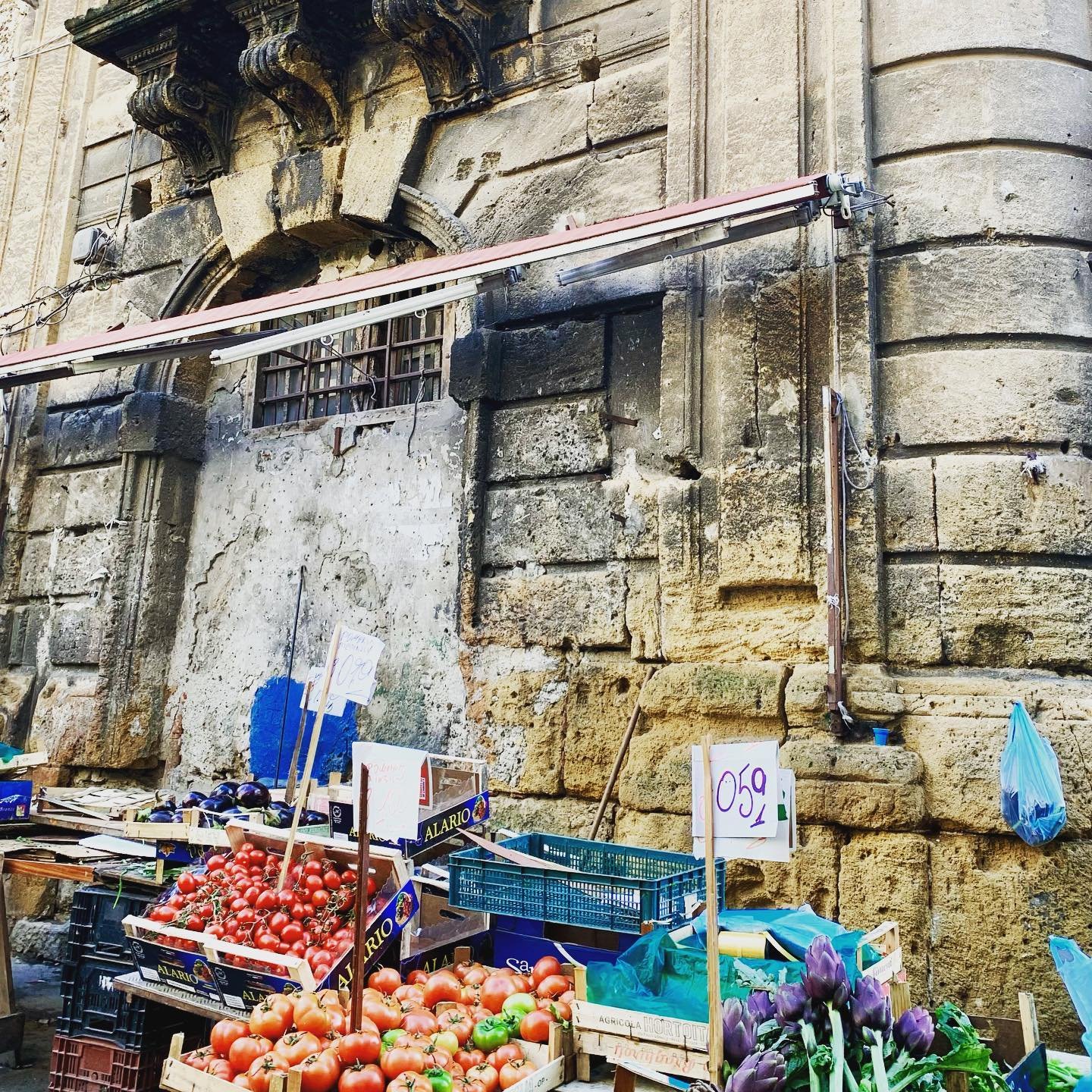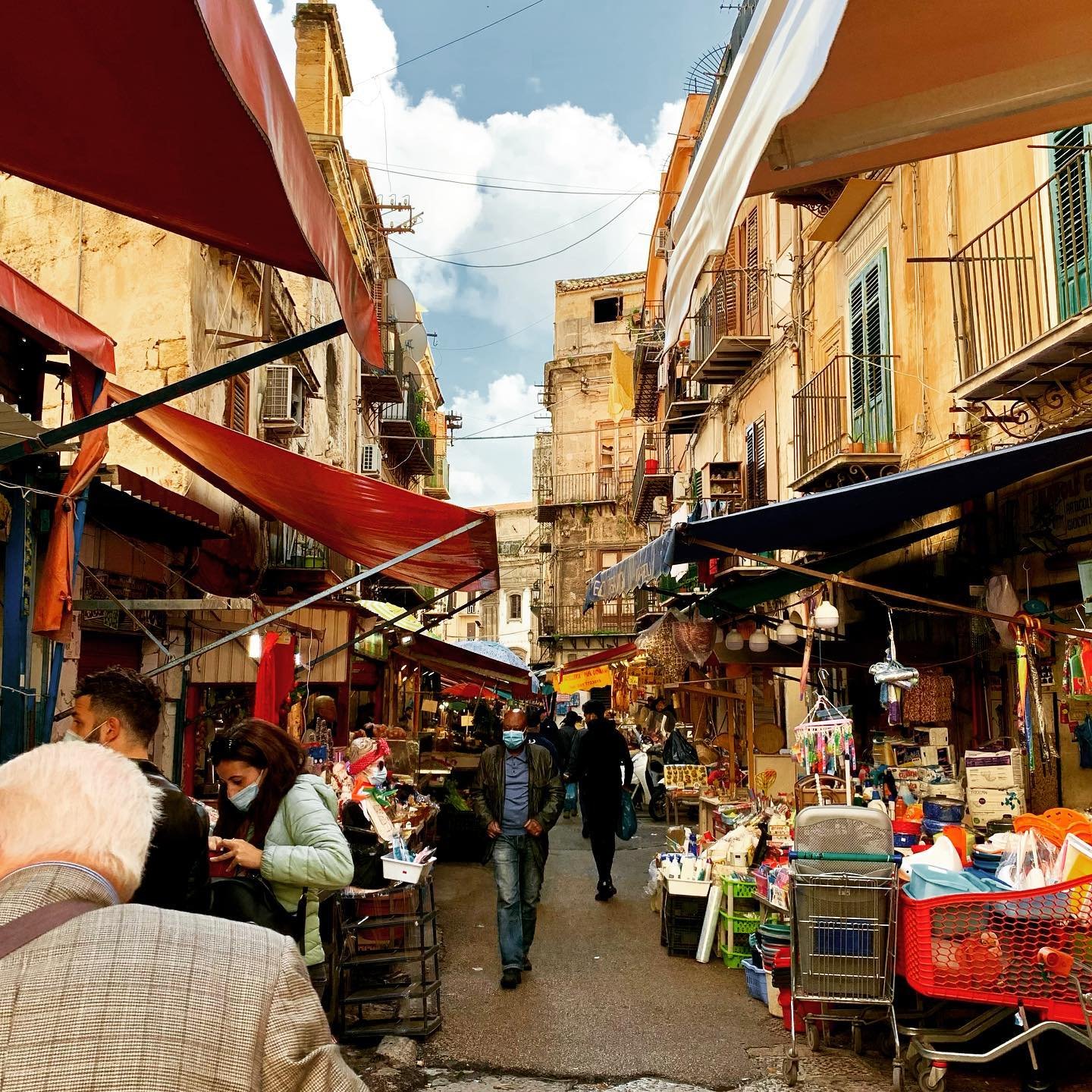Ballarò Open Air Market
This grey Punic wall has been the backdrop of the Ballarò market for just over a thousand years. The Sicilian name Ballarò is thought to come from the Arabic phrase 𝘚𝘶𝘬 𝘢𝘭 𝘉𝘢𝘭𝘢𝘳𝘪, a 𝘴𝘶𝘬 or 𝘴𝘰𝘶𝘬 is another name for bazaar, and this one looks like it hasn't changed much since the 900's. The street is narrow and vendors set up tables and tents making the walkway even tighter, just when you think it's single-file a motorbike comes up behind you and squeezes past. It’s vibrant, colorful, and very chaotic, some vendors shout and others sing. The market snakes its way through a labyrinth of Palermo alleys and is at times a little bit scary!
I was warned they don’t like their pictures taken, so I was careful to be discreet.
I was more interested in this Punic wall actually. You can see it’s kind of a confused mixture of building materials and time periods.
The foundation, perhaps marked by those irregular stones at the base, harks back to the original Punic walls erected around the city of Palermo by the Carthaginians in the 2nd Century BCE. These fortifications were a testament to their defensive efforts, reflecting the strategic importance of a city known to them as "Zys" – a name shared with their Phoenician forebears. "Zys" played a pivotal role during the First Punic War, serving as a focal point in the conflict between the
Carthaginians who had it and the Romans who wanted it. .
Two wars later the city fell into Roman hands, and "Zys" underwent a transformation, being rechristened "Panormus." This name derived from Greek, signifying "all-port" or "complete port," a fitting reflection of the city's prime maritime location and its significance as a hub of trade and seafaring activity.
The mid and upper parts of the walls here are obviously from later periods, incorporating the foundational Punic defenses. Yet, nearly a millennium later, in 831 AD, after the Arab conquest of the city, this area became the 𝘚𝘶𝘬 𝘢𝘭 𝘉𝘢𝘭𝘢𝘳𝘪, a market trading food and goods as it has done ever since.
The Aghlabid Arabs took control of Palermo calling it "Bal'harm" (بلهرم) in Arabic. This name was the Arabic version of the Latin name "Panormus" Over time, the Arabic name "Bal'harm" evolved into the modern Italian name "Palermo."


